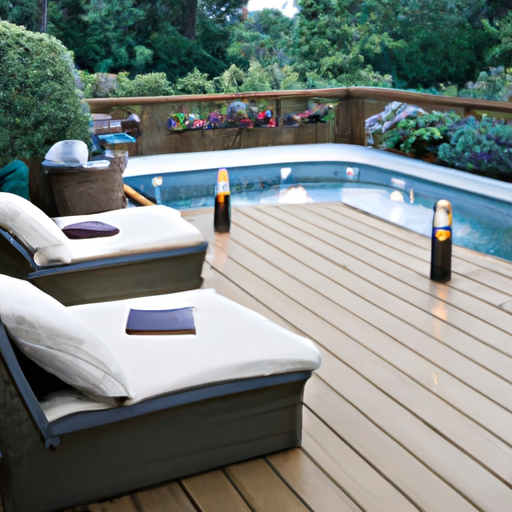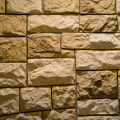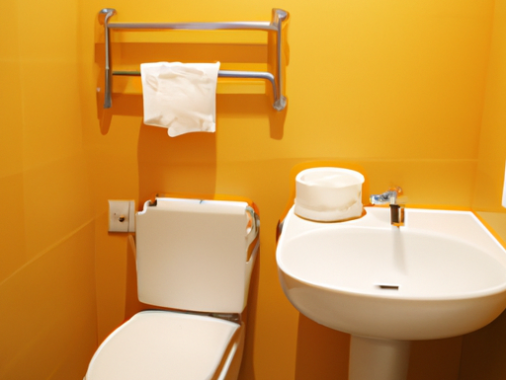-
Table of Contents
- Introduction
- How to Design a Floating Deck for Maximum Visual Impact
- Creative Ideas for Decorating a Floating Deck
- Tips for Building a Floating Deck on a Budget
- The Benefits of Installing a Floating Deck
- How to Choose the Right Materials for a Floating Deck
- The Pros and Cons of Different Floating Deck Designs
- The Best Ways to Maintain a Floating Deck Over Time
- Q&A
- Conclusion
Introduction
Floating decks are a great way to add a unique and stylish touch to your outdoor space. They are easy to install and can be used to create a variety of different looks. Floating decks are also a great way to maximize the use of your outdoor space, as they can be built over existing structures or even on top of a pool. With a little bit of creativity, you can create a beautiful and functional outdoor space with a floating deck. In this article, we will explore some of the best floating deck ideas and how to get started on your own project.
How to Design a Floating Deck for Maximum Visual Impact
Floating decks are an increasingly popular outdoor design element that can add visual impact to any backyard. With careful planning and design, a floating deck can be an attractive and functional addition to your outdoor space. Here are some tips for designing a floating deck for maximum visual impact.
1. Choose the Right Materials: The materials you choose for your floating deck will have a major impact on its overall look and feel. Consider using materials that will complement the existing architecture of your home and landscape. For example, if your home has a modern design, opt for materials such as composite decking or metal. If your home has a more traditional look, opt for wood decking.
2. Consider the Size: The size of your floating deck will also have an impact on its visual impact. Consider the size of your outdoor space and the amount of traffic it will receive. If you have a large outdoor space, you can opt for a larger deck. If you have a smaller space, opt for a smaller deck.
3. Choose the Right Shape: The shape of your floating deck will also have an impact on its visual impact. Consider the shape of your outdoor space and the amount of traffic it will receive. If you have a large outdoor space, you can opt for a more complex shape such as an octagon or a hexagon. If you have a smaller space, opt for a simpler shape such as a rectangle or square.
4. Add Visual Interest: To add visual interest to your floating deck, consider adding features such as built-in benches, planters, or lighting. These features can help to create a more inviting and attractive outdoor space.
By following these tips, you can design a floating deck that will have maximum visual impact. With careful planning and design, your floating deck can be an attractive and functional addition to your outdoor space.
Creative Ideas for Decorating a Floating Deck
Decorating a floating deck can be a great way to add a unique touch to your outdoor space. Here are some creative ideas to help you get started:
1. Add a Pergola: A pergola is a great way to add a touch of elegance to your floating deck. It can provide shade and create a cozy atmosphere.
2. Hang String Lights: String lights are a great way to add a festive touch to your deck. Hang them from the pergola or from the railing of the deck for a beautiful effect.
3. Install a Fire Pit: A fire pit is a great way to create a cozy atmosphere on your deck. You can use it to roast marshmallows or just to keep warm on a cool night.
4. Add Planters: Planters are a great way to add color and life to your deck. You can hang them from the railing or place them on the deck itself.
5. Install a Water Feature: A water feature can add a calming and peaceful atmosphere to your deck. You can choose from a variety of styles, such as a fountain or a pond.
6. Add Seating: Seating is essential for any outdoor space. Choose comfortable seating that fits the style of your deck and enjoy the outdoors.
These are just a few creative ideas for decorating a floating deck. With a little bit of creativity, you can create a beautiful and unique outdoor space that you and your family can enjoy for years to come.
Tips for Building a Floating Deck on a Budget
Building a floating deck on a budget is a great way to add outdoor living space to your home without breaking the bank. Here are some tips to help you get started:
1. Choose the Right Materials: When building a floating deck, it’s important to choose materials that are both affordable and durable. Pressure-treated lumber is a great option as it is both cost-effective and long-lasting.
2. Plan Ahead: Before you start building, it’s important to plan out the size and shape of your deck. This will help you determine the amount of materials you need and the cost associated with them.
3. Use Reclaimed Materials: If you’re looking to save money, consider using reclaimed materials for your deck. Reclaimed wood can be found at many home improvement stores and is often much cheaper than buying new materials.
4. Consider a DIY Kit: If you’re not comfortable building a deck from scratch, consider purchasing a DIY kit. These kits come with all the materials and instructions you need to build a floating deck.
5. Utilize Free Resources: There are many free resources available online that can help you build a floating deck on a budget. From step-by-step instructions to helpful tips and tricks, these resources can be invaluable when it comes to saving money.
By following these tips, you can build a beautiful floating deck on a budget. With a little bit of planning and creativity, you can create an outdoor living space that you and your family can enjoy for years to come.
The Benefits of Installing a Floating Deck
Floating decks are an increasingly popular outdoor addition to any home. They provide a great space for entertaining, relaxing, and enjoying the outdoors. Installing a floating deck can provide a number of benefits to homeowners.
One of the main benefits of installing a floating deck is that it is relatively easy to install. Unlike traditional decks, which require extensive excavation and construction, floating decks can be installed quickly and easily. This makes them a great option for homeowners who want to add an outdoor living space without the hassle of a major construction project.
Another benefit of installing a floating deck is that it is more cost-effective than traditional decks. Floating decks require fewer materials and less labor, making them a more affordable option. Additionally, floating decks are less likely to require repairs or maintenance, which can save homeowners money in the long run.
Finally, floating decks are also more aesthetically pleasing than traditional decks. They provide a modern, contemporary look that can enhance the overall look of any outdoor space. Floating decks can also be customized to fit any size or shape of outdoor space, making them a great option for homeowners who want to create a unique outdoor living space.
Overall, installing a floating deck can provide a number of benefits to homeowners. They are easy to install, cost-effective, and aesthetically pleasing. With these benefits, it is easy to see why floating decks are becoming an increasingly popular outdoor addition.
How to Choose the Right Materials for a Floating Deck
When planning a floating deck, it is important to choose the right materials to ensure the deck is safe and secure. The materials used for a floating deck must be able to withstand the elements and provide a stable foundation. Here are some tips for choosing the right materials for a floating deck.
First, consider the climate in which the deck will be built. Different materials are better suited for different climates. For example, in a wet climate, pressure-treated wood is a good choice as it is resistant to moisture and rot. In a dry climate, composite decking is a better option as it is more resistant to heat and sun damage.
Second, consider the size of the deck. Larger decks require more materials and may require additional support. For larger decks, it is important to use materials that are strong and durable, such as steel or concrete.
Third, consider the budget. Different materials have different costs associated with them. Pressure-treated wood is usually the most affordable option, while composite decking is more expensive. It is important to consider the cost of the materials when planning a floating deck.
Finally, consider the aesthetic of the deck. Different materials have different looks and textures. Pressure-treated wood has a classic look, while composite decking has a more modern look. It is important to choose materials that will complement the overall look of the deck.
By considering the climate, size, budget, and aesthetic of the deck, it is possible to choose the right materials for a floating deck. With the right materials, a floating deck can be a beautiful and functional addition to any outdoor space.
The Pros and Cons of Different Floating Deck Designs
Floating decks are an increasingly popular outdoor design feature, offering a versatile and attractive way to create a usable space in your backyard. While there are many different designs for floating decks, each has its own advantages and disadvantages. Understanding the pros and cons of different floating deck designs can help you make an informed decision when planning your own outdoor space.
One of the most popular floating deck designs is the platform deck. This type of deck is built on a flat, level surface and is usually constructed from wood or composite materials. The main advantage of a platform deck is that it is relatively easy to build and can be customized to fit any size or shape of outdoor space. Additionally, platform decks are often less expensive than other floating deck designs. However, platform decks can be more difficult to maintain and may require more frequent repairs.
Another popular floating deck design is the cantilever deck. This type of deck is built on a raised platform and is usually constructed from wood or composite materials. The main advantage of a cantilever deck is that it is more stable than a platform deck and can be used to create a larger outdoor space. Additionally, cantilever decks are often more aesthetically pleasing than platform decks. However, cantilever decks can be more expensive to build and may require more maintenance.
Finally, the floating dock is another popular floating deck design. This type of deck is built on a floating platform and is usually constructed from wood or composite materials. The main advantage of a floating dock is that it is more stable than a platform or cantilever deck and can be used to create a larger outdoor space. Additionally, floating docks are often more aesthetically pleasing than other floating deck designs. However, floating docks can be more expensive to build and may require more maintenance.
When deciding which type of floating deck design is best for your outdoor space, it is important to consider the pros and cons of each option. Understanding the advantages and disadvantages of different floating deck designs can help you make an informed decision when planning your own outdoor space.
The Best Ways to Maintain a Floating Deck Over Time
Floating decks are an attractive and functional addition to any outdoor space. However, like any outdoor structure, they require regular maintenance to ensure they remain in good condition. Here are some of the best ways to maintain a floating deck over time.
1. Clean the Deck Regularly: To keep your floating deck looking its best, it’s important to clean it regularly. Use a mild detergent and a soft-bristled brush to scrub away dirt and debris. Rinse the deck with a garden hose and allow it to dry completely before applying a sealant or stain.
2. Inspect the Deck: Inspect the deck regularly for signs of wear and tear. Look for loose boards, nails, or screws that may need to be tightened or replaced. Also, check for any signs of rot or water damage.
3. Seal or Stain the Deck: Applying a sealant or stain to your floating deck can help protect it from the elements and extend its life. Choose a product that is designed for outdoor use and follow the manufacturer’s instructions for application.
4. Repair Damage Promptly: If you notice any damage to your floating deck, it’s important to repair it promptly. This will help prevent further damage and ensure the deck remains safe and secure.
5. Store Outdoor Furniture Properly: If you have outdoor furniture on your floating deck, it’s important to store it properly when not in use. This will help protect it from the elements and prevent it from causing damage to the deck.
By following these tips, you can help ensure your floating deck remains in good condition for years to come.
Q&A
1. What are some ideas for a floating deck?
A floating deck is a great way to add extra outdoor living space to your home. Some ideas for a floating deck include a multi-level deck, a deck with built-in seating, a deck with a pergola, a deck with a fire pit, and a deck with a hot tub.
2. What materials are best for a floating deck?
The best materials for a floating deck are pressure-treated wood, composite decking, and PVC decking. Pressure-treated wood is the most affordable option, but it requires regular maintenance. Composite decking is more expensive but requires less maintenance. PVC decking is the most expensive option but is also the most durable and requires the least amount of maintenance.
3. How much does a floating deck cost?
The cost of a floating deck depends on the size, materials, and labor involved. Generally, a floating deck can cost anywhere from $2,000 to $10,000 or more.
4. How do you build a floating deck?
Building a floating deck requires careful planning and preparation. First, you need to determine the size and shape of the deck. Then, you need to prepare the area by leveling the ground and laying down a base of gravel or sand. Next, you need to install the deck frame and joists. Finally, you need to attach the decking boards and finish the deck with railings, stairs, and other features.
5. What is the best way to secure a floating deck?
The best way to secure a floating deck is to use concrete footings. Concrete footings are poured into the ground and provide a stable foundation for the deck. You can also use deck blocks or piers to support the deck.
6. How do you waterproof a floating deck?
To waterproof a floating deck, you need to use a waterproofing membrane. This membrane is applied to the underside of the deck and helps to protect it from water damage. You can also use a sealant or stain to protect the deck from the elements.
7. How do you maintain a floating deck?
Maintaining a floating deck is relatively easy. You should clean the deck regularly with a mild detergent and water. You should also inspect the deck for any signs of damage or wear and tear. Finally, you should apply a sealant or stain to protect the deck from the elements.
Conclusion
Floating deck ideas are a great way to add a unique and stylish touch to any outdoor space. They are easy to install, require minimal maintenance, and can be customized to fit any budget. With a little creativity and planning, you can create a beautiful and functional outdoor space that will be enjoyed for years to come.




